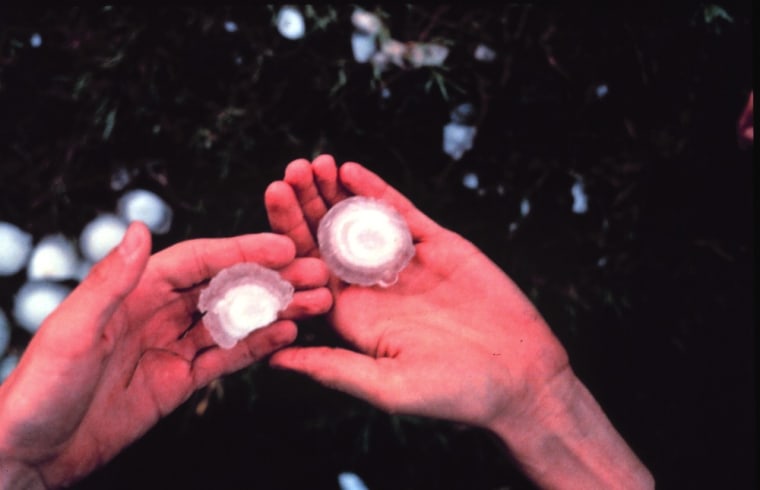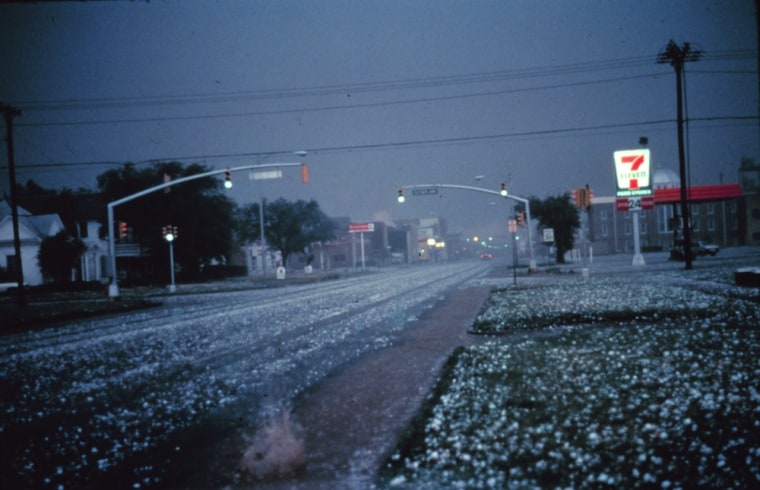Living bacteria that get whipped up into the sky may be just the spark needed for rain, snow and even hailstorms, research now finds.
Alexander Michaud of Montana State University in Bozeman, Mont., found large amounts of bacteria at the centers of giant hailstones.

Traditionally, researchers have thought that minerals or other particulates in clouds caused water droplets to glom together until they were large enough to fall as raindrops, snowflakes and hail. The new research shows that a large variety of bacteria, and even fungi, diatoms and algae, persist in the clouds and can be used as precipitation starters, a growing field of study called bioprecipitation. (In order for snow, say, to fall from clouds, particles around which ice crystals can form — called ice nuclei — are needed.)
"Minerals were thought to be the dominant ice nucleators in the atmosphere, but they aren't nearly as active as biological particles," said Brent Christner, a microbiologist studying bioprecipitation at Louisiana State University who is presenting the work Tuesday at the General Meeting of the American Society for Microbiology in New Orleans.
Bacterial beginnings
For minerals to form ice nuclei, water needs to be much colder than is usually found in clouds, Christner told LiveScience. Bacteria and other living particles that get swept up into the sky may serve as alternative nucleators.
Michaud, also presenting at the conference, collected hailstones about the size of golf balls (greater than 2 inches in diameter) after a huge hailstorm hit Montana in June 2010. He separated the hail into four layers, which are formed as the ice is created and moves up and down through the clouds, accumulating layer upon layer of ice. He found that bacteria levels were highest at the core of the hail.
"Bacteria have been found within the embryo, the first part of a hailstone to develop. The embryo is a snapshot of what was involved with the event that initiated growth of the hailstone," Michaud said in a statement. "There is growing evidence that these nuclei can be bacteria or other biological particles."
By determining the temperature at which the hailstones formed, the team found that these bacteria allowed the ice to form at warmer temperatures than otherwise expected.
Importance of ice
Previously Christner's group found that the widely studied plant pathogen Psuedomonas syringae plays an important role in snow formation all over the world, including Antarctica, where there are few plants. The pathogen is known to be very good at creating ice at temperatures above the normal freezing point of water.
These bacteria are equipped with a special substance that binds water molecules in an orderly arrangement, and in these proximities they can more easily form ice particles. When on the ground, the bacteria use this ice to damage plants, causing the plant cells to break apart and allowing the bacteria to enter.
"An organism that lives on a plant, where you want to be is back on the ground on another plant. If you have the ability to produce precipitation, fall down and land on a plant, it could be a cycle," Christner told LiveScience. "They could be using this protein as a way to hitchhike on the water cycle."
Their presence on the ground, and in the clouds, could influence weather conditions and cycles.
You can follow LiveScience staff writer Jennifer Welsh on Twitter @. Follow LiveScience for the latest in science news and discoveries on Twitter and on .
